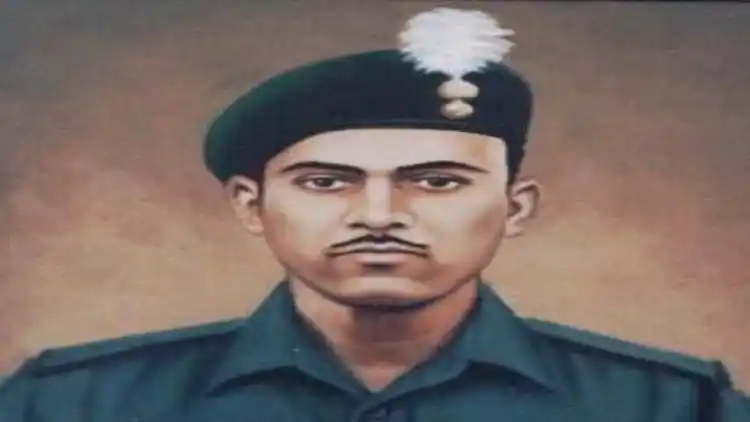
Saquib Salim
More than technology and superior weaponry a war is won by human emotions and bravery of the men. However, quite often, technologically advanced nations with resources and strong armies, start believing in their invincibility. Under the false pride such nations try to invade other sovereigns forgetting that arms can be bought with money while brave soldiers are brought up by great mothers. History is full of instances where brave men have defeated better equipped armies.
Havildar Abdul Hamid is one such name.
It was September of 1965. Pakistan, in its vainglory of having secured Patton Tanks from the United States of America (USA), invaded India. Patton Tanks were considered the best in the world.Pakistanis too failed to realize that battles are won by the grit of people and not by the arms. The Army Generals of Pakistan, had probably forgotten the history of warfare.
On 8 September, 1965, the Pakistan army invaded Khem Karan, Punjab. The enemy entered with Patton tanks. Back then, India didn’t have anti-tank mines. The best, Indians had, were recoilless (RCL) guns mounted on jeeps. An intelligent mind would say that it was a no match and India stood no chance against Patton tanks. The battle, as the modern analysts would want us to believe, was over even before its commencement.
It's in such dire situations that brave hearts do create history. This time, it was Havildar Abdul Hamid of 4 Grenadiers, who would prove to the world that love for your country is far superior weapon than the mighty technology.
At 9 am, on 8 September, Hamid spotted a Pakistani tank battalion heading towards his position. Sitting in a jeep mounted with a RCL gun, he thought about his options. Of course, the RCL gun was no match to a battalion of Patton tanks. Hamid, a 1962 war veteran, decided to counter Patton tanks with his RCL gun. He camouflaged his jeep by parking it in a sugarcane field. As soon as a tank was within the range Hamid fired at it making it burst in flames. To fire upon a tank with an RCL gun when it is only 30 yards away is an insanely courageous act. Other Pakistanis following deserted their tanks and fled. Effectively, three Patton tanks were defeated, one destroyed and two were captured by Hamid. The feat was unprecedented.
Two hours later, three Patton tanks again tried to intrude in the Indian territory. The story was repeated. Hamid let them come close to his Jeep and then destroyed a tank while Pakistanis left the other two in a haste. By the end of the day, Hamid, with his RCL mounted Jeep, had destroyed two and captured four Patton tanks.
Next morning, 9 September, it was business as usual for Hamid. He destroyed two more tanks. Pakistanis left other tanks and ran away. In the annals of military history, nothing similar had happened before. Authorities sent his citation for Param Vir Chakra (PVC), the highest military decoration in India, by the evening. But, the mission was far from over.
On September 10, Hamid again sat in his Jeep. Like a hunter, he would lookout for Patton tanks in the sugarcane field of Khem Karan. The first tank he spotted was allowed to come close and ended in flames. Hamid destroyed two more tanks.
Hamid spotted the fourth Patton tank. It would be his 8th trophy in three days. Hamid drove closer to it. This time the tank spotted his Jeep. The Jeep and the tank were facing each other as Hamid set the target and fired. Simultaneously, the tank also fired at his Jeep. The tank was blown into flames. A shell also hit Hamid’s Jeep. Hamid had laid down his life in service of his motherland.
The battle is remembered as the battle of Asal Uttar (Battle of befitting reply) where the Pakistani army left at least 70 tanks, which were later recovered by the Indian army from the sugarcane fields. These tanks are now displayed at different cantonments across the country as war trophies. Next time, whenever you spot a Pakistani tank on display at an army cantonment do pay tribute to Abdul Hamid.
